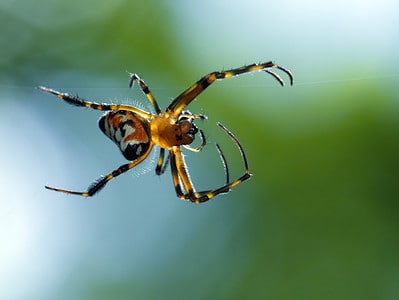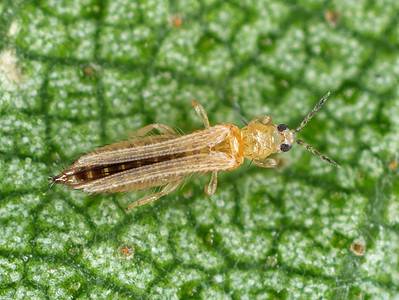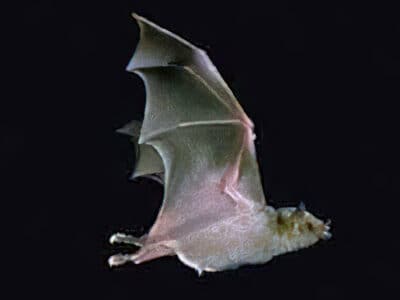Woma Python
A. ramsayi
Woma pythons often prey on venomous snakes and are immune to some venoms.
Advertisement
Woma Python Scientific Classification
- Kingdom
- Animalia
- Phylum
- Chordata
- Class
- Reptilia
- Order
- Squamata
- Family
- Pythonidae
- Genus
- Aspidites
- Scientific Name
- A. ramsayi
Read our Complete Guide to Classification of Animals.
Woma Python Conservation Status
Woma Python Facts
- Prey
- Lizards, birds, rodents, snakes
- Name Of Young
- Hatchlings
- Group Behavior
- Solitary except during mating season
- Fun Fact
- Woma pythons often prey on venomous snakes and are immune to some venoms.
- Most Distinctive Feature
- Orange head with dark markings over their eyes.
- Other Name(s)
- Ramsay's python, sand python, the woma
- Gestation Period
- 2-3 months
- Litter Size
- 5-20 eggs per clutch
- Lifestyle
- Diurnal
- or Nocturnal Depending on Region and Season
- Location
- Central and Western Australia
Woma Python Physical Characteristics
- Color
- Brown
- Yellow
- Black
- Orange
- Skin Type
- Scales
- Lifespan
- ~ 20 years
- Weight
- 2-11 pounds
- Length
- 4.5-7 feet long, and up to 8.5
- Age of Sexual Maturity
- 2-3 years
- Venomous
- No
- Aggression
- Low
View all of the Woma Python images!
Woma pythons are effective hunters that are just as good at squishing their prey as they are constricting it.
Also known as Ramsay’s python, the woma is a nonvenomous constrictor that used to be common throughout western Australia; however, it is endangered in some areas and the subject of reintroduction attempts.
Amazing Facts About Woma Pythons
- The woma and its sister species, the black-headed python, are unusual and don’t have any heat-sensing pits.
- People sometimes confuse the woma with the northern brown snake (Pseudechis nuchelis), known as the gwardar – a venomous member of the Elapidae family native to Australia.
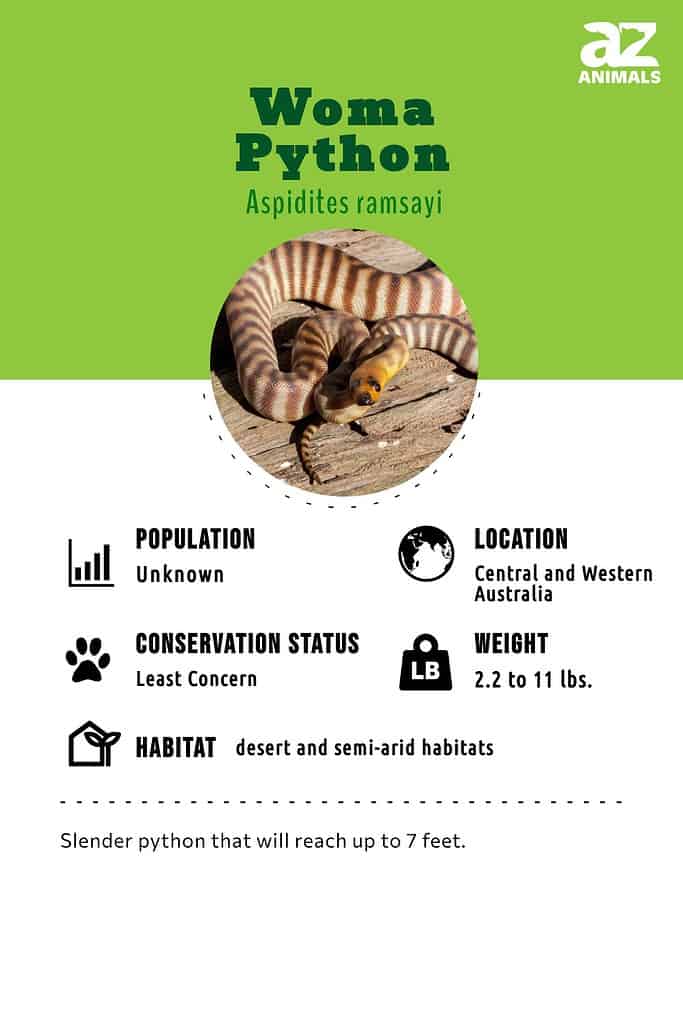
Where to Find Them
Woma pythons tend to prefer desert and semi-arid habitats and are often found in sandy areas. They also occur in grassland, acacia and eucalyptus woodlands, and other non-sandy areas. The general habitat type doesn’t seem as crucial to their survival as having appropriate shelter.
During the day, they take shelter in rock crevices, hollow logs, animal burrows, and under thick vegetation. Woma pythons’ activity levels are dependent on the outside temperatures. During the summer heat, they are active at night (nocturnal), and during the winter, they are diurnal.
While this species is generally terrestrial and sometimes fossorial, it’s also opportunistic and will climb trees, hunt in burrows, and take whatever prey it can. The woma’s diet is varied; they feed equally on mammals and reptiles, with birds and eggs thrown into the mix.
Hunting for this snake sometimes adds new scars. It’s primarily nocturnal and catches at least some of its prey in burrows. It doesn’t just bite and constrict; however, some of these burrows are too small for the woma to wrap multiple coils around its prey. So, it uses a loop of its body to pin its prey against the side of the burrow. This method, while effective, doesn’t kill as quickly as constriction. Adult snakes are usually covered in scars because the prey goes down fighting.
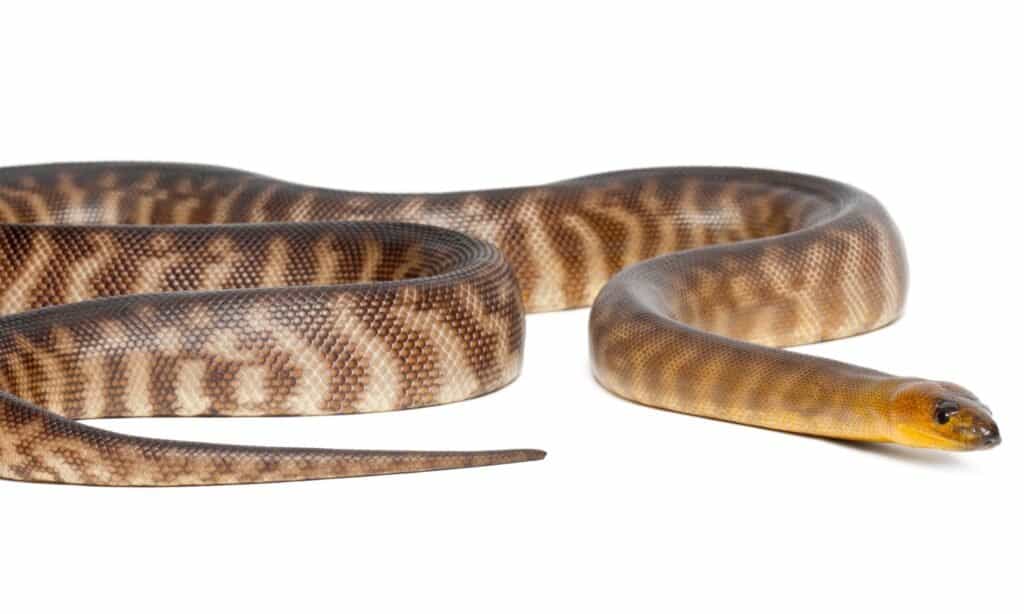
This snake is also called Ramsay’s python, it has an orange to yellow-orange head.
©iStock.com/GlobalP
Reproduction
This species’ mating season occurs from May to August in the wild. A female lays anywhere from 5-20 three-inch long eggs and stays coiled around them for the next two to three months, protecting and incubating her eggs until they hatch. She shivers to create a little more heat if the temperature drops too far. After the babies hatch, they’re on their own. At hatching, woma pythons average 12 inches long; they are voracious eaters able to take their first bit of prey within a couple of days after hatching.
Scientific Name
Their scientific name is Aspidites ramsayi; Aspidites originates in Greek and means “shield-bearer,” after the symmetrically-shaped large scales on their head. William John Macleay named the snake named in honor of Edward Pierson Ramsay, an Australian zoologist, and ornithologist. This species goes by a few names: Ramsay’s sand python, sand python, or the woma.
There are only two species within the genus Aspidites, the other is the black-headed python. This genus is endemic to Australia, and the snakes’ ranges overlap a little bit.
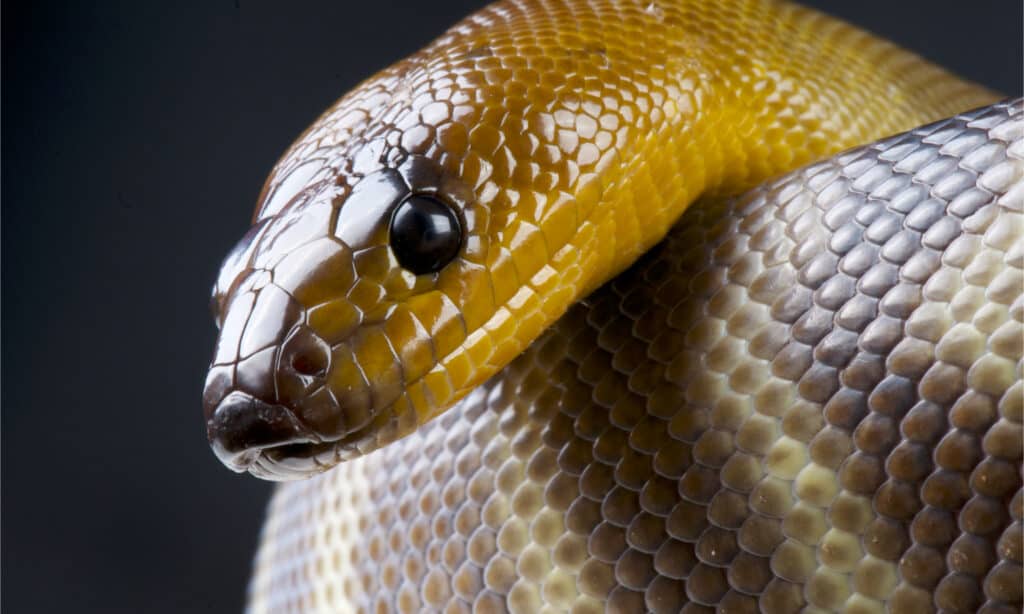
Woma pythons are docile and easy to handle.
©reptiles4all/Shutterstock.com
History and Evolution
What makes the Woma Python different from other pythons is that it lacks heat-sensing pits like other pythons. Scientists believe that this may not have evolved due to most of their historical hunting being executed in underground burrows. They do, however, have the vomeronasal organ that does help them smell their prey.
While they are normally considered burrowing snakes, there is some evidence that they spend more time tree-dwelling than researchers previously believed. They are known to feed and prey upon other snakes. This is due to them being resistant to other snakes’ venom.
Population and Conservation Status
The IUCN Redlist of Endangered Species lists the woma as “least concern” because it has an extensive range. It also doesn’t appear to be declining fast enough, on the whole, for them to include the snake in a higher threat category. However, this isn’t a complete picture, as it is endangered in some areas. Because of this, it’s listed on Schedule 4 (Specially Protected Fauna) of the Western Australian Wildlife Conservation Act.
The Department of Environment and Heritage is working to mitigate the threats posed by invasive species, habitat degradation, and illegal pet trade collection. However, the mulga, a highly venomous brown snake species, eats the young pythons before they mature enough to breed. Other threats include attempts to control invasive rabbits by destroying ground burrows. Animals that rely on these burrows for shelter are most likely affected by the burrows’ destruction.
Appearance and Description
The woma is slender for a python and can reach seven feet long; on occasion, an outlier manages eight feet, but that’s not the norm. Like most pythons, they move slowly forward in a straight line instead of the elegant movement other species exhibit. It’s called rectilinear progression, and it isn’t the fastest mode of transportation – they only move at about one mile per hour. It’s pretty cool, but this snake adds one neat feature to their locomotion over hot surfaces: it lifts its body off the ground and reaches forward as far as possible before pushing off the ground again. This method allows it to keep most of its body off the ground and only a few inches touching the ground at a given moment.
This snake often has an orange head with dark markings over its eyes that look sort of like eyebrows. Instead of heat-sensing pits on its lip scales, it has a similar organ at the tip of its snout, right at the opening of its mouth. The woma has a narrow head and small eyes, with a somewhat flattish body and thin tail that it uses as a lure for prey. Its scales are smooth and glossy with a creamy yellow belly, while its body is yellow, reddish, gray, or olive-brown with dark brown to black bands down the length of its body.
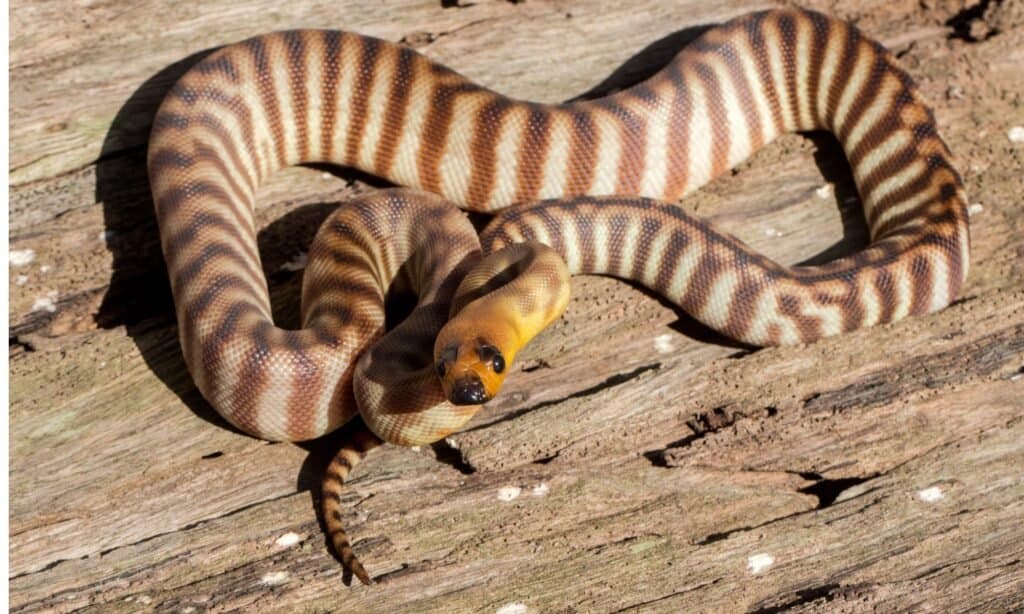
The woma has dark spots that look like eyebrows.
©iStock.com/Ken Griffiths
Video
How Dangerous are They?
Woma pythons aren’t dangerous and, thanks to their docile nature, are popular pet snakes, with many available from breeders. They don’t attack people, and would rather be left alone. Captive-bred pet snakes are easy to handle and often seem to enjoy some attention. If you corner one, it will hiss and try to intimidate you, but it isn’t likely to bite. They eat a variety of small animals that, if left unchecked, would overrun the environment – snakes are nature’s rodent control, after all!
Behavior and Humans
These snakes sometimes dig their burrows, and wild populations frequently use self-dug burrows or enlarge an existing one left behind by another animal. They are pretty resilient, and surface vegetation changes don’t affect them much; however, some agricultural activities and grazing animals may destroy some of the burrows they depend on.
The woma’s narrow pointy head is different than most pythons. Its shape is similar to that of the brown snake, so people sometimes mistake them for that highly venomous snake. As a result, they’re sometimes killed out of fear because of the brown snake, but this harmless python is great to have around.
View all 108 animals that start with WWoma Python FAQs (Frequently Asked Questions)
Where do woma pythons live?
Womas are endemic to Australia, and cover the central 2/3s of the continent, extending to the northwest coast; with a population on the southwest coast.
What do Womas eat?
These pythons eat mammals, reptiles, and birds. They’re generalist carnivores that will eat anything they can overpower and swallow.
How do Womas hunt?
They’re ambush predators that use their tails to lure prey to them.
Are woma pythons dangerous?
No! While a large snake could be difficult to handle, they only grow to about 7 feet, aren’t venomous, and are very docile.
Thank you for reading! Have some feedback for us? Contact the AZ Animals editorial team.
Sources
- Woma Python | San Diego Zoo, Available here: https://animals.sandiegozoo.org/animals/woma-python
- IUCN Redlist of Threatened Species, Available here: https://www.iucnredlist.org/species/2176/83765377
- Woma | Department of Environment and Heritage, Available here: https://www.environment.nsw.gov.au/savingourspeciesapp/project.aspx?ProfileID=10069








